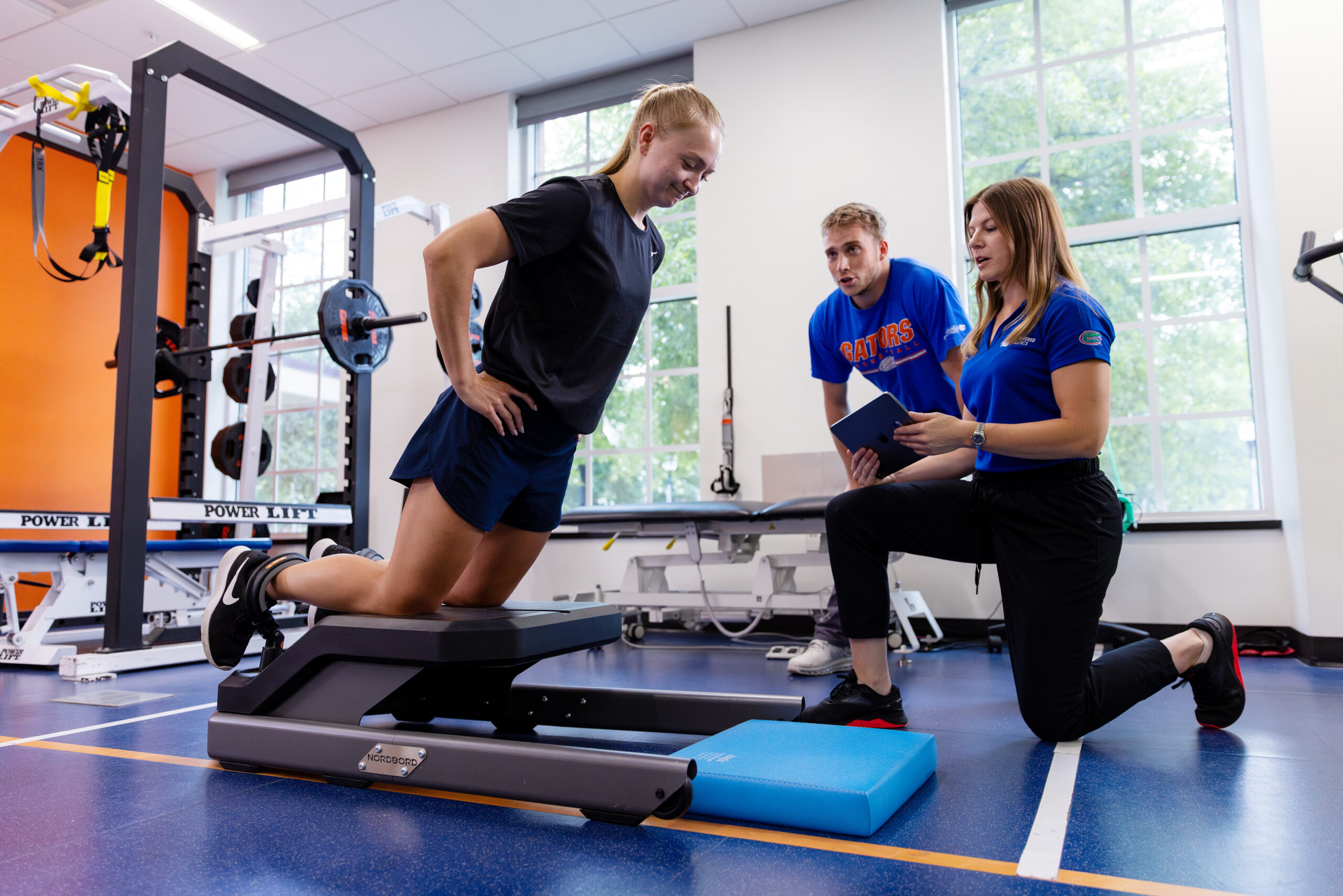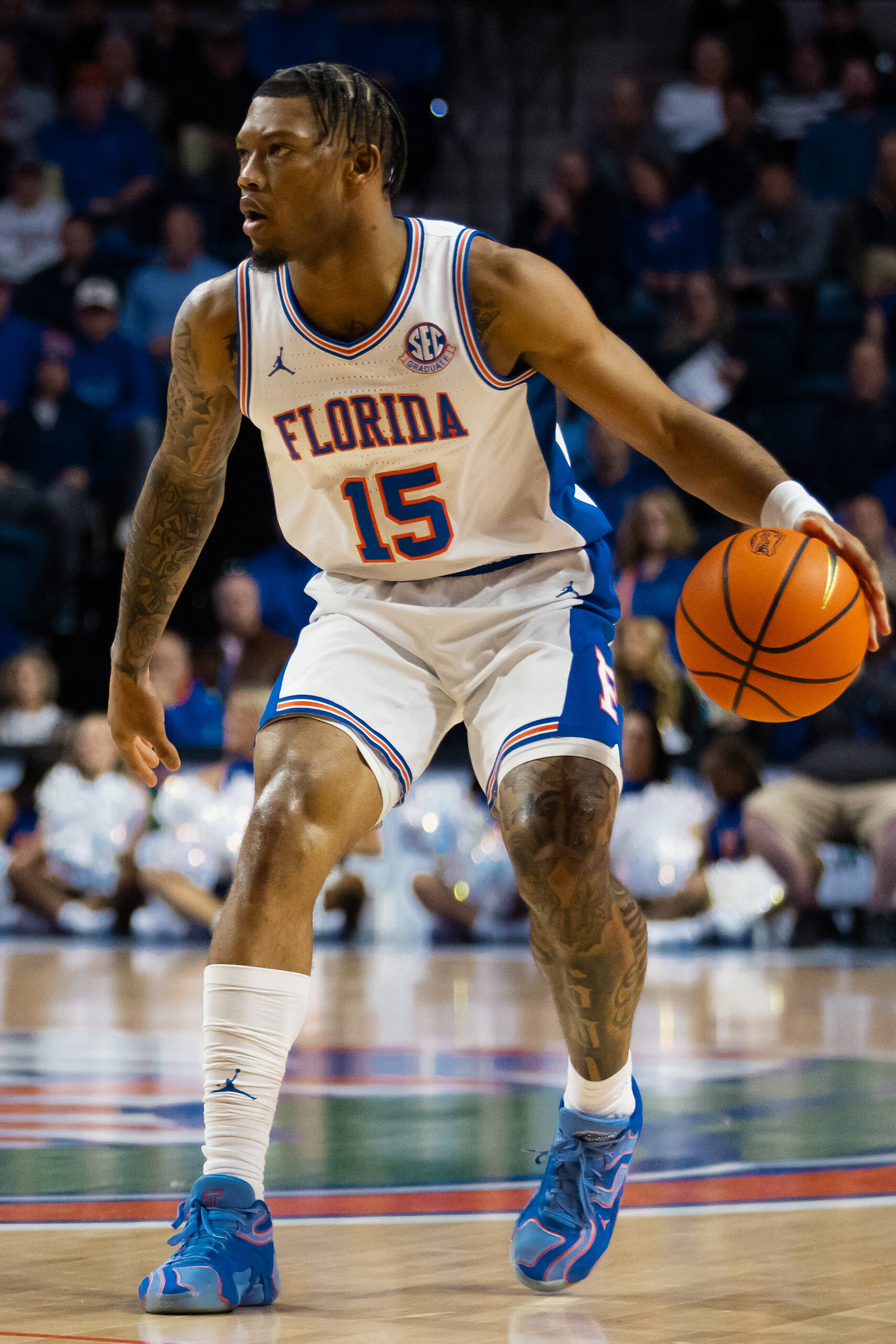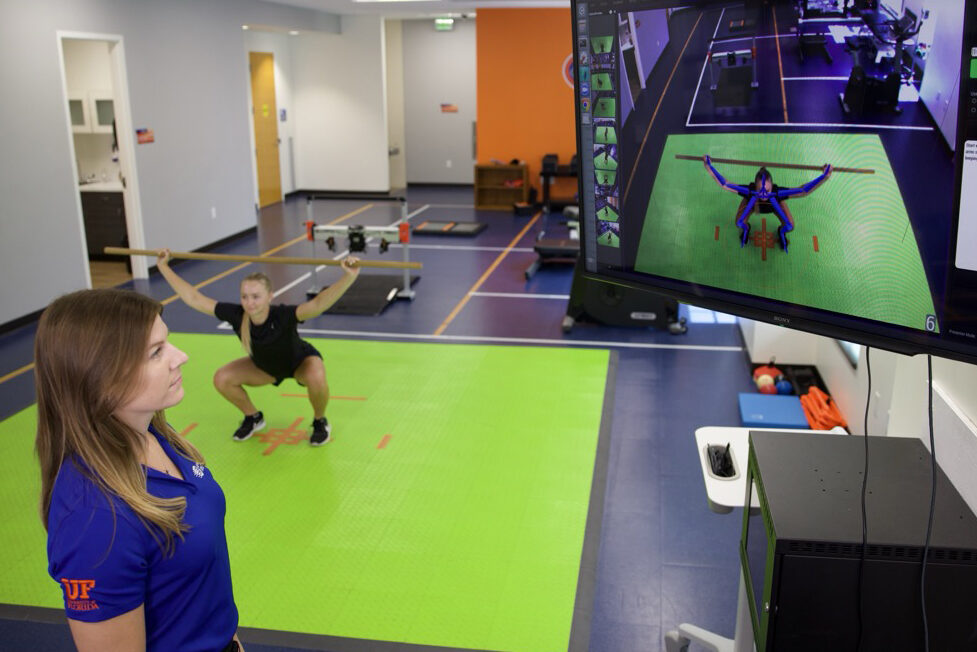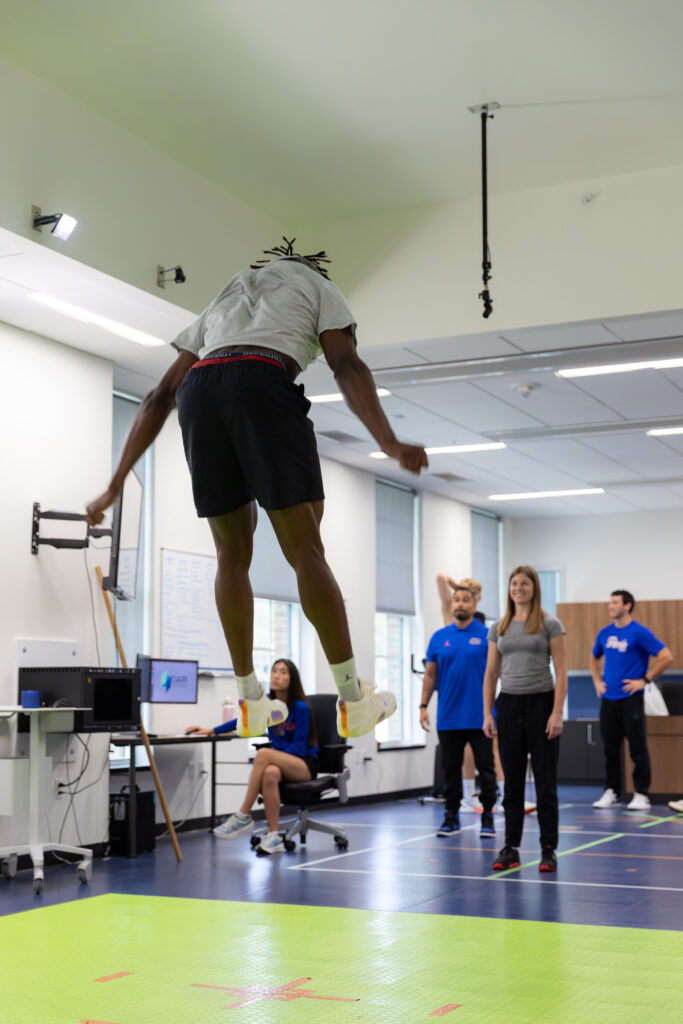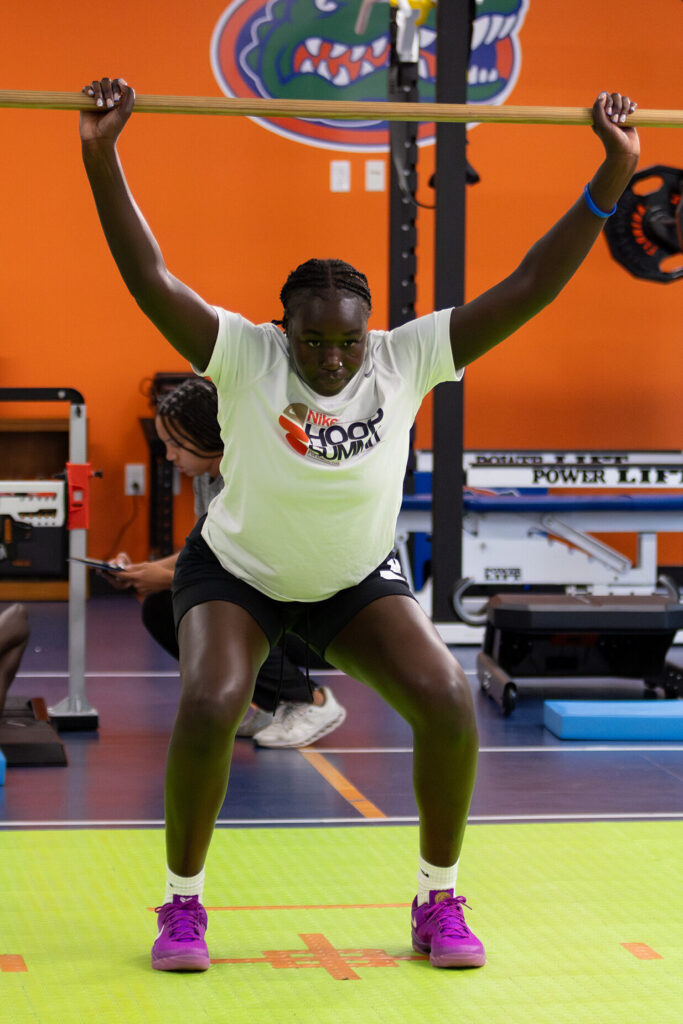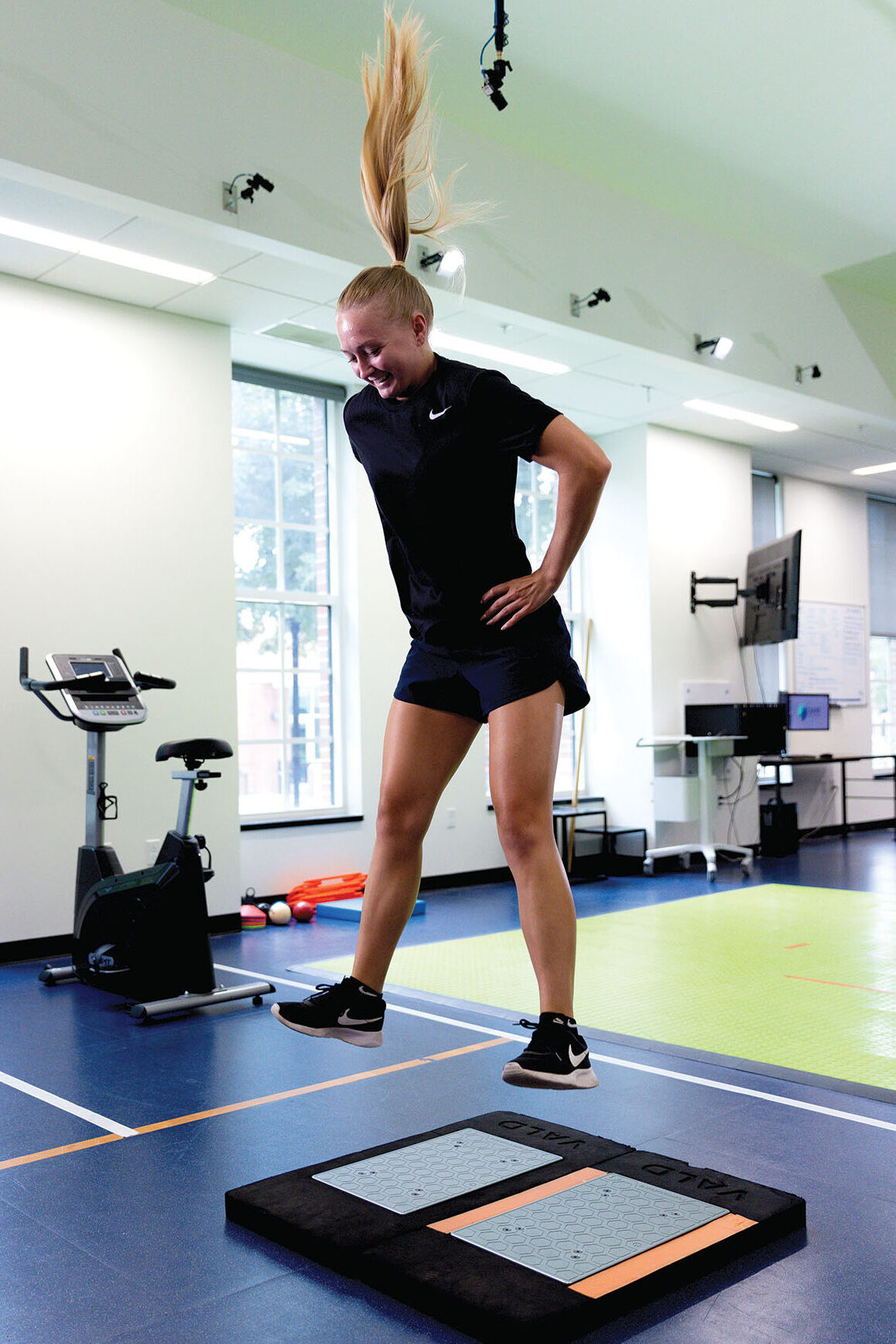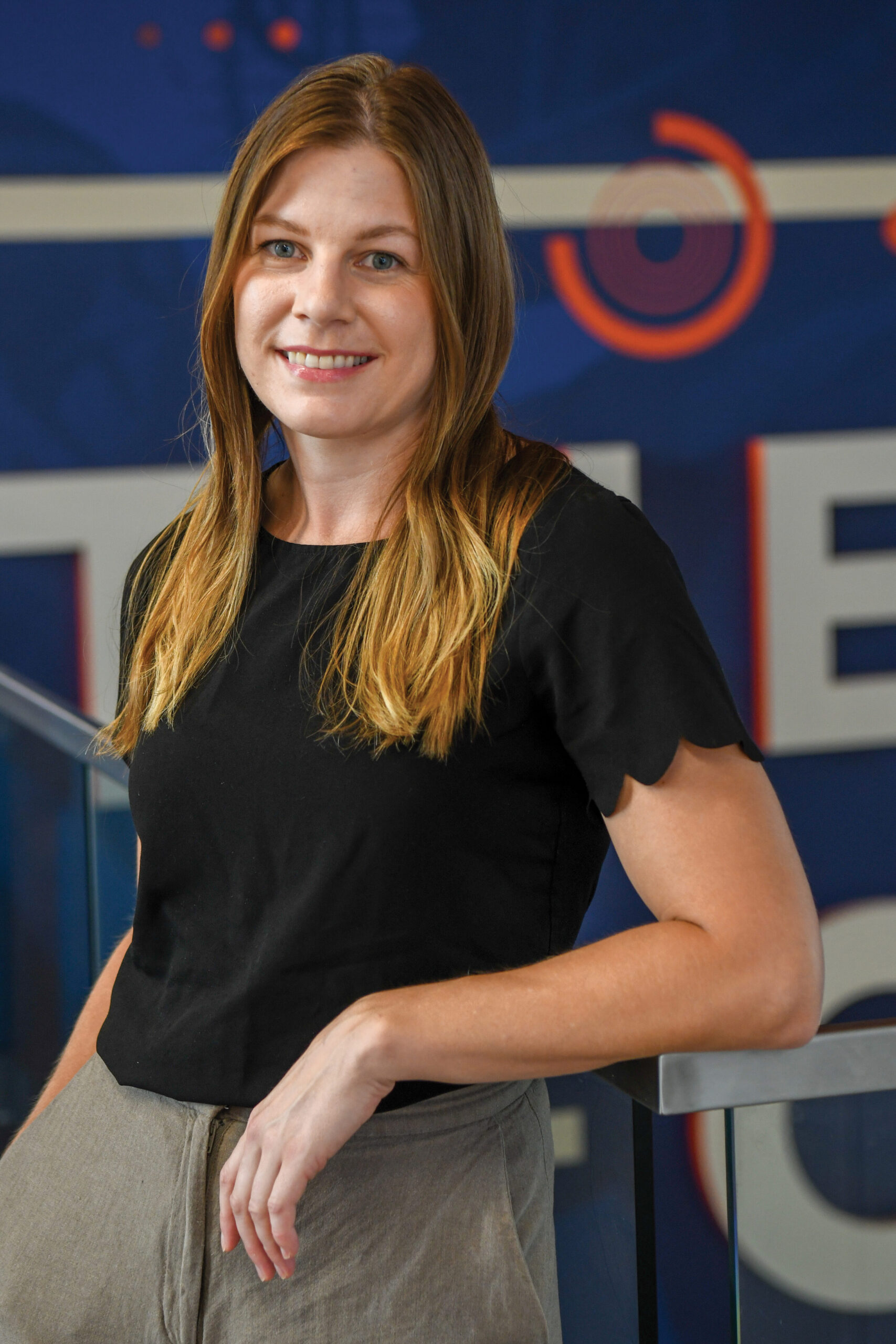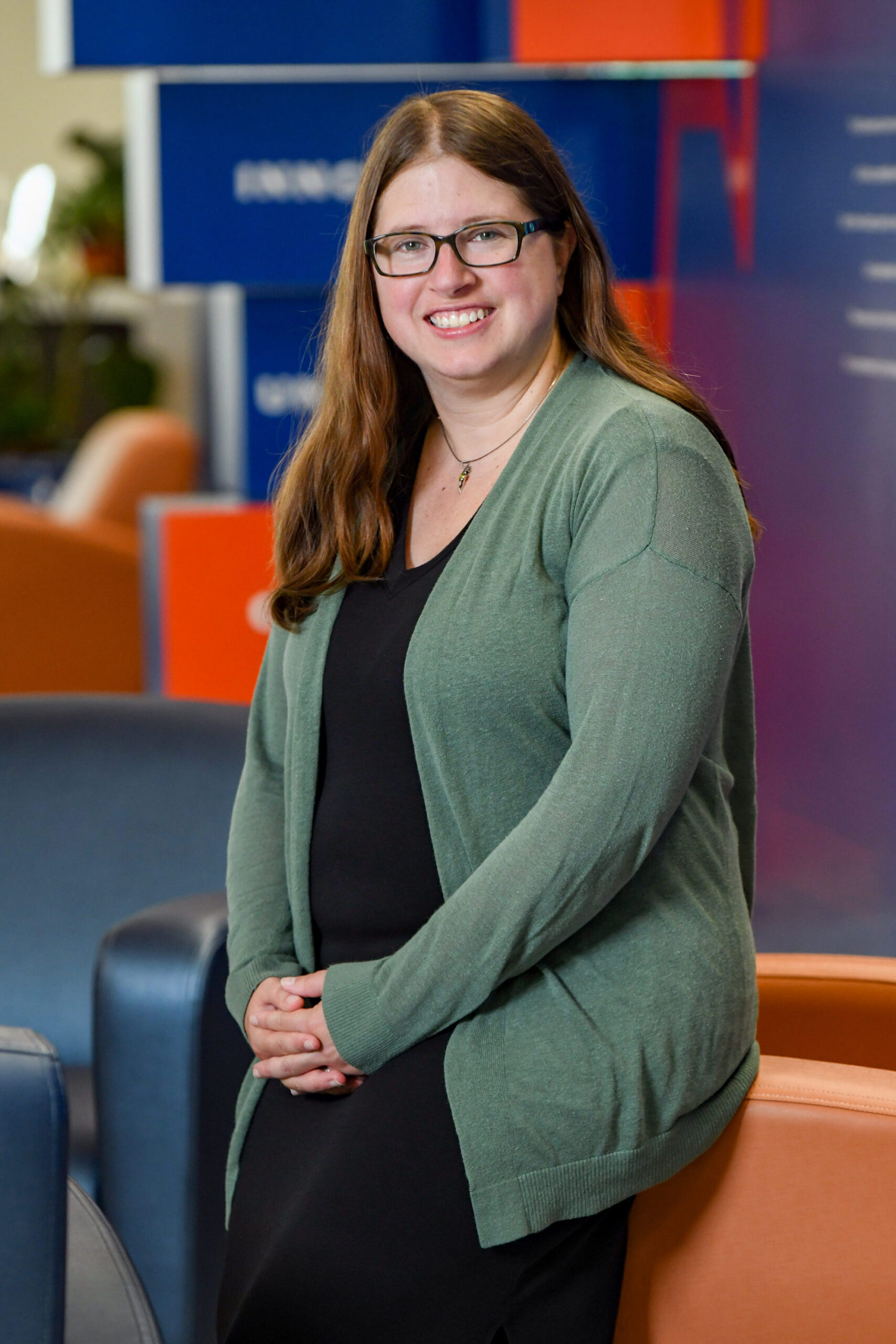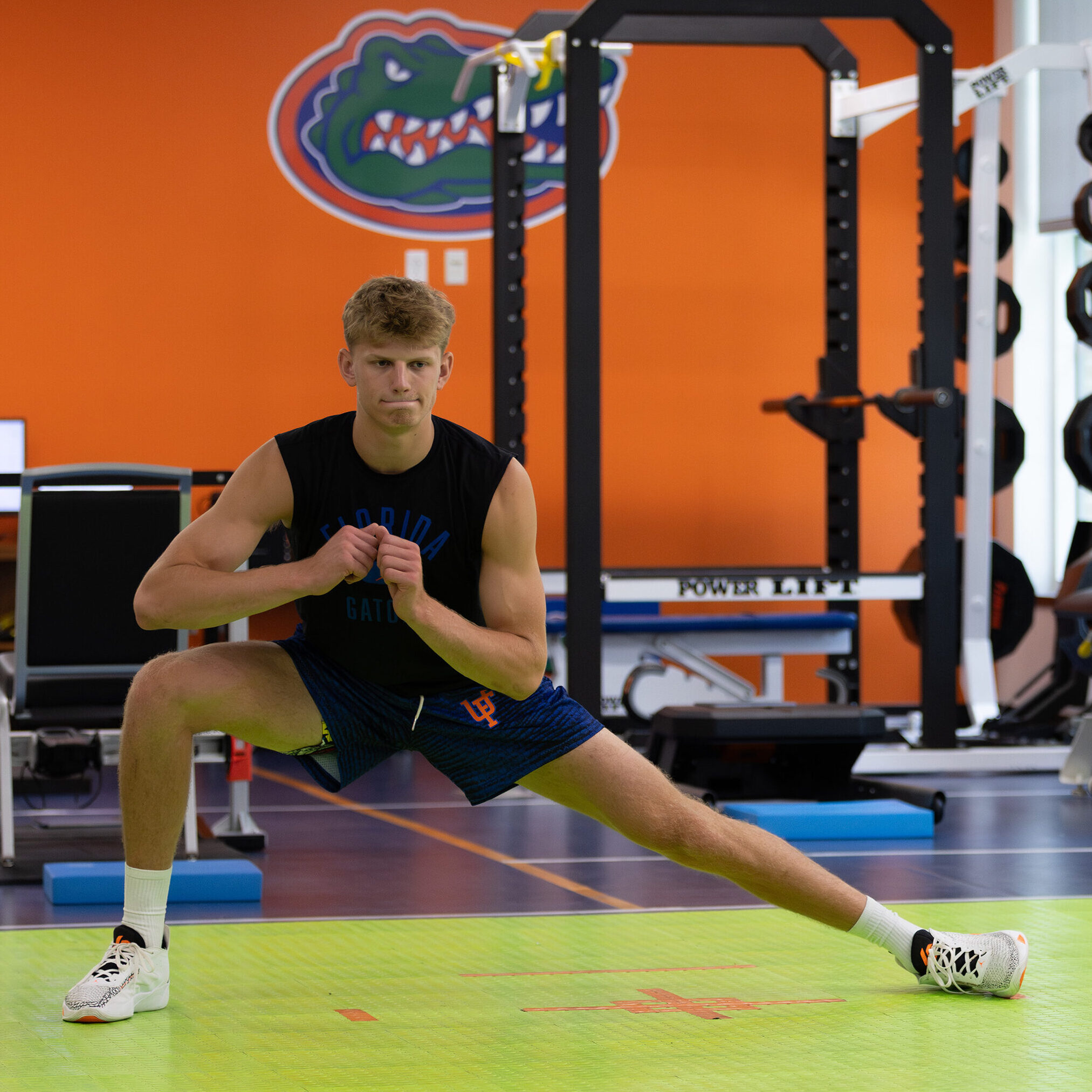I
magine every member of the Florida Gators football team wearing a wireless sensor during practices and games that uses GPS, accelerometers and other technologies to gather over 1,000 data points per second on location, speed and workload. Now imagine that for the basketball team, the volleyball team, the soccer team and UF’s other intercollegiate sports teams.
“Just one athlete wearing one kind of tracking device can generate a billion data points in a single season,” says Jennifer Nichols, an associate professor of biomedical engineering. “Multiply that by the 500 athletes across all of UF’s intercollegiate sports times multiple seasons and multiple data sources and the numbers get real big real fast.”
Historically, strength and conditioning coaches and athletic trainers for each team have gathered, stored and analyzed their parts of that data in their own ways, working to extract insights to help their athletes perform better and stay healthier.
But what if all the information from all of the athletes across all of the sports was in one giant database that representatives from all of the sports could access in easy-to-understand custom dashboards? What if artificial intelligence could spot trends in that data that could show how insights garnered from a track high jumper could be used to help a basketball player jump higher? What if data revealed the different ways in which men and women athletes recover from pulled hamstrings or high ankle sprains? What if data revealed the similarities and differences between how baseball pitchers and football quarterbacks throw a ball and what that means for their arms?
That’s exactly what a collaboration between the Herbert Wertheim College of Engineering and the University of Florida Athletic Association (UAA) is hoping to achieve through the AI-Powered Athletics initiative, part of a UF & Sport Collaborative to elevate the university’s already stellar reputation in sports performance, healthcare and communication.
“The UAA collects a large amount of data from student-athletes on health, nutrition and sports performance,” says Daniel Ferris, the Robert W. Adenbaum Professor of Engineering Innovation in the J. Crayton Pruitt Family Department of Biomedical Engineering. “Most of that data is under-analyzed and under-utilized. Our proposed treatment of the data could greatly benefit team performance and student-athlete health and well-being.”
One of the first moves made by project leaders Nichols and Spencer Thomas, the UAA’s director of sports performance and analytics, was to recruit Celeste Wilkins to help organize, arrange and categorize all the data. Wilkins is a biomechanist and research scientist who has experience with the NBA’s Toronto Raptors and in thoroughbred and show jumping.
Athletic teams are adding tools to their arsenal every day. So we’re building this data bank not just for now but for the future, to accommodate sports technology as it emerges.” — Celeste Wilkins
“I’m the boots-on-the-ground doer,” Wilkins says. “The aim of the project is to create a data bank for both research purposes and for the UAA to leverage with advanced analytics. My role is coordinating all the data.”
Wilkins says one of the biggest challenges is that “all of these data sources are living in different areas.”
“They could be notes kept on a clipboard, they could be spreadsheets kept on somebody’s computer or in a proprietary database,” she says. “We want to centralize all of those data sources into somewhere secure and accessible … in order to inform high-quality decision making on the athletic front and on the research front.”
Wilkins says the end product has to be flexible enough to keep up with evolving technology.
Nichols says one benefit of eliminating silos between sports is that it enables the researchers to see similarities and differences among athletes from different disciplines.
“And as you might expect, coaches want different things from the data,” she says. “The musculoskeletal system of a gymnast is going to be different than that of a sprinter. It’s going to be different for your center than your point guard.”
“The goal of AI-Powered Athletics is to bridge our AI knowledge in the College of Engineering with the expertise of Gator Athletics,” says Nichols. “We have world-class AI and world-class athletics, and we’re trying to bring those together to fulfill research, educational and athletic goals.”
Before they started organizing the data, the researchers sat down with 17 UF coaches and trainers from five different teams to ask how they use the data they already have and how they would like to use data in the future. UF engineering doctoral students Mollie Brewer and Kevin Childs recently presented the results of those conversations in a paper at the prestigious Association for Computing Machinery CHI conference in Japan.
Brewer and Childs reported that while teams have “an abundance of data sources” — including inertial measurement units, global positioning systems, film analysis, hydration testing, body composition analysis, force plates and velocity-based training systems — they use the information selectively.
“We have world-class AI and world-class athletics, and we’re trying to bring those together to fulfill research, educational and athletic goals.” —Jennifer Nichols
“Coaches and support staff are not passive consumers of performance data but active decision-makers who integrate quantitative insights with their coaching experience and understanding of athletes’ needs, performance objectives and team goals,” Brewer and Childs reported. “Coaching staff manage data at every stage of the process while striving to balance data-driven insights with professional judgment and athlete well-being.”
UF head basketball Coach Todd Golden was an early adopter of using analytics for everything from in-game decisions to roster construction and recruiting strategy. So when Victor Lopez, director of strength and conditioning for the Gator men’s basketball team, presented him with data and a plan to build players’ stamina going into what the coaches knew was going to be a grueling postseason last spring, he was all in.
In preparation for the post-season tournaments, Lopez reported workload data collected throughout the season to Golden and his staff to help prepare practice plans. The numbers informed Florida’s decision to ratchet up the intensity at practices before the SEC and NCAA tournaments “so that our guys didn’t feel that workload for the first time. To make sure that we’ve been there before and we could operate at a high level.”
So it was no surprise to Lopez that during the Gators’ run to the NCAA Men’s Basketball Championship last spring, television analysts commented repeatedly about how fresh Florida’s players looked compared to their opponents.
“It worked out like a charm,” Lopez says with a smile.
While winning championships is always a goal, Nichols says the team is primarily focused on the student-athletes.
“If we’re honest, I’m not actually a sports fan, but I am a fan of student-athletes,” she says with a chuckle. “I really value that our goal is to help the student athlete not only excel as an athlete, but also excel as a student. They’ve chosen to do two incredibly difficult things at the same time. They’ve chosen to complete an undergraduate college education and do college athletics and perform on the field to the best of their ability. So, anything we can do to help their performance both in the classroom and on the field is really important and really valuable.”
Part of supporting the student athletes is protecting their personal health data, Wilkins says. Apart from the team coaches and staff, all of the information gathered about student athletes will be deidentified to protect their privacy.
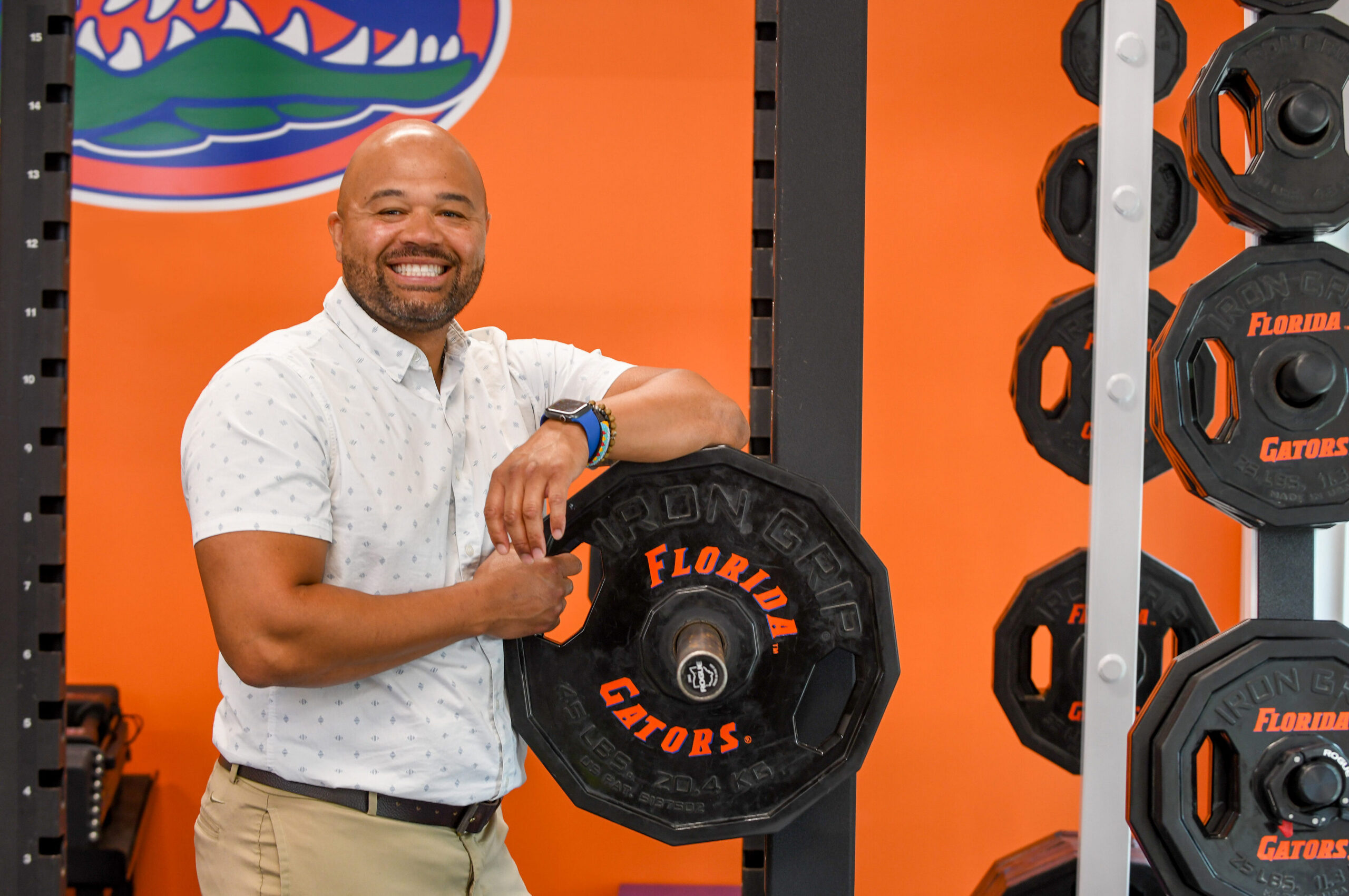
“One of the unique aspects of this research project is that we’ve been able to speak to athletes one-on-one … and ask them whether they consent to having their data contributed to the data bank, and that’s really been eye opening for the athletes,” Wilkins says. “They’ve had to consider which data are collected and what that might yield. A lot of them are quite aware of the data that’s collected about them, but now they get to decide whether they contribute their data to cutting-edge research or whether they would prefer to conserve some of the data privately.”
UF’s HiPerGator supercomputer is a powerful tool for crunching all this data, says Thomas. This initiative enables the engineers, strength and conditioning coaches, athletic trainers and coaches to work together to figure out how to best use that tool.
“We’re looking for ways to optimize performance and win championships. How do we utilize this data to enrich our student athletes and to help us perform?” says Thomas.
Ultimately, the AI-Powered Athletics team hopes to use the vast scientific resources of the University of Florida to give Gator athletes and coaches a competitive advantage, on the field of play and in life.
When it comes to athletics in the future, Wilkins says “there will be some teams that guess and some that know. We want the Gators to know.”
Team effort: The UF & Sport Collaborative
The UF & Sport Collaborative is a multi-faceted initiative with five major thrusts.
The collaborative, which has received $2.5 million in strategic funding from the university, is a partnership between the University Athletic Association, the College of Health and Human Performance, the Warrington College of Business, the College of Journalism and Communications, the College of Medicine, and the Herbert Wertheim College of Engineering. In addition to AI-Powered Athletics, there are four other thrusts:
Sport and Health Leaders: A new certificate program through the College of Health and Human Performance is increasing students’ understanding of athletes and the factors that influence their wellbeing. Available courses include Personal and Family Health, Athlete Health and Wellbeing, Athlete Career Management, and Worksite and Health Promotion.
Gator AccelerAItor for Sport Analytics: The College of Health and Human Performance and the Warrington College of Business are working with the UF’s men’s basketball team to improve recruitment, player evaluation, scouting, and game strategy through artificial intelligence (AI) tools. The project is also developing a master’s degree program in AI and Sports Analytics which will provide students with a real-world laboratory for working directly with teams and athletes.
Transforming Sport Science Research for Every Body: The College of Medicine is helping advance the analytic capacity of the UF Health Sports Performance Center, making it a centerpiece of research and testing for able-bodied and para-athletes of all ages and fitness levels. The Center is advancing precision treatment, performance training, and research inclusivity for athletes.
Gator Nation Gameday Live: The College of Journalism and Communications is offering students an opportunity to produce a live, one-hour sports preview show, modeled after ESPN’s “College GameDay” program. Students will gain experience in anchoring, reporting, producing, and directing.
Sources:
Jennifer Nichols
Associate Professor of Biomedical Engineering
JNichols@bme.ufl.edu
Spencer Thomas
Director of Sports Performance and Analytics
SpencerT@gators.ufl.edu
Celeste Wilkins
Research Assistant Scientist
celeste.wilkins@ufl.edu
Hear the Story
The audio version of this story is available on our YouTube.

